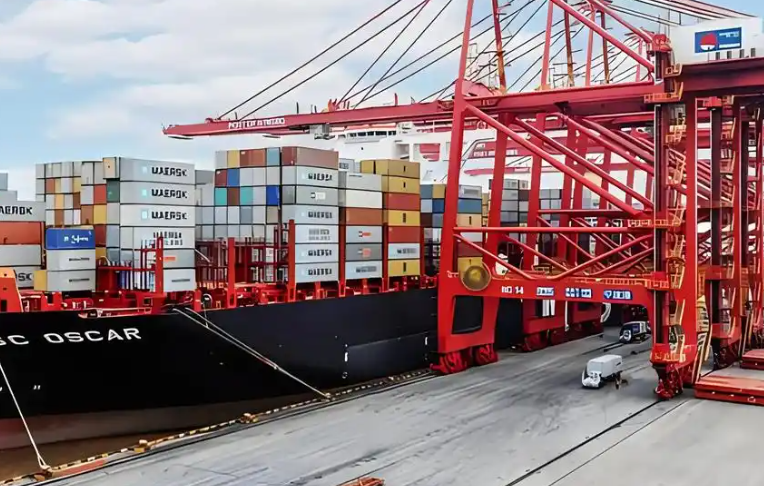How to reduce sea freight LCL freight? In the world of international trade, sea freight plays a pivotal role in transporting goods across vast oceans. However, for businesses shipping less-than-container-load (LCL) cargo, the costs can quickly add up, eating into profit margins and making it challenging to maintain competitiveness. If you’re looking to reduce sea freight LCL freight, you’re in the right place. This comprehensive guide will delve into the intricacies of LCL shipping, offer practical strategies to minimize costs, and provide actionable tips to optimize your shipping process. By the end, you’ll be equipped with the knowledge and tools to navigate the complex world of LCL shipping with confidence and efficiency.
Understanding LCL Shipping
Before we dive into cost-reduction strategies, it’s essential to understand what LCL shipping entails. Less-than-container-load shipping refers to the transportation of cargo that doesn’t fill an entire container. This is common for small businesses or when shipping smaller quantities of goods. LCL cargo is typically consolidated at a freight forwarder’s warehouse, where it’s combined with other LCL shipments to form a full container load. The container is then shipped to the destination port, where it’s deconsolidated, and the individual shipments are delivered to their respective recipients.
While LCL shipping offers flexibility and convenience for smaller shippers, it also comes with additional costs, such as consolidation and deconsolidation fees, handling charges, and potential delays due to the need to wait for other shipments to fill the container. These factors can make LCL shipping more expensive than full container load (FCL) shipping. However, with the right strategies in place, you can significantly reduce your LCL freight costs.
Strategies to Reduce Sea Freight LCL Freight
Optimize Cargo Packaging
Use Standardized Packaging: Utilize standard-sized boxes and pallets that are easy to stack and handle. This reduces the risk of damage and makes it easier for freight forwarders to consolidate and deconsolidate your cargo, potentially lowering handling fees.
Maximize Space Utilization: Pack your goods tightly to minimize wasted space. Consider using void fill materials like bubble wrap or foam to prevent shifting and damage while maximizing space.
Label Clearly: Ensure all packages are clearly labeled with the necessary information, such as shipment details, contents, and handling instructions. This helps avoid misrouting and reduces the need for additional handling, which can lead to extra charges.
Choose the Right Freight Forwarder
Research and Compare: Not all freight forwarders are created equal. Take the time to research and compare different forwarders based on their reputation, experience with LCL shipping, and pricing. Look for forwarders with a strong network of partners and agents in your destination country to ensure smooth and efficient handling of your cargo.
Negotiate: Don’t be afraid to negotiate with freight forwarders for better rates. If you have a regular shipping volume, you may be able to secure a volume discount or a more favorable pricing structure.
Consider Consolidation Services
Utilize Consolidation Centers: Some freight forwarders offer consolidation services at their warehouses. By shipping your goods to a consolidation center, you can reduce the need for multiple handling points and potentially lower your overall freight costs.
Direct Consolidation: If possible, opt for direct consolidation with other shippers in your area who are also shipping LCL cargo. This can reduce transportation costs to the consolidation point and minimize the risk of delays.
Optimize Shipping Routes and Schedules
Choose Cost-Effective Routes: Evaluate different shipping routes and choose the one that offers the best balance between cost and transit time. Sometimes, a longer transit time can result in significant cost savings.
Ship Off-Peak: Shipping during peak seasons or at busy times of the year can lead to higher freight costs due to increased demand. If possible, ship during off-peak periods to take advantage of lower rates.
Book in Advance: Secure your shipping space well in advance to avoid last-minute surcharges and ensure your cargo is shipped on the desired schedule.
Reduce Documentation Costs
Electronic Documentation: Opt for electronic documentation wherever possible. This not only saves paper but also reduces the need for physical handling and storage, lowering administrative costs.
Accurate Documentation: Ensure all documentation is accurate and complete to avoid any customs delays or additional fees. Incorrect or incomplete documentation can lead to costly delays and fines.
Consider Insurance Options
Evaluate Insurance Needs: While insurance is essential to protect your cargo, be mindful of over-insuring. Assess the value of your goods and choose an insurance policy that provides adequate coverage without unnecessary expenses.
Compare Insurance Providers: Just like freight forwarders, insurance providers also vary in terms of pricing and coverage. Compare different options to find the best fit for your needs.
Leverage Technology
Use Shipping Management Software: Invest in shipping management software that helps you track your shipments, manage documentation, and optimize your shipping process. This can reduce errors, streamline operations, and ultimately lower costs.
Automate Where Possible: Look for opportunities to automate repetitive tasks, such as invoicing or customs declarations. Automation can reduce manual errors and save time, leading to cost savings.
Build Strong Relationships
Develop Partnerships: Establish long-term relationships with your freight forwarder, customs agents, and other stakeholders in the shipping process. Strong partnerships can lead to better communication, more favorable terms, and cost savings over time.
Participate in Industry Networks: Join industry associations and networks to stay informed about the latest trends, regulations, and cost-saving opportunities in the shipping industry.
Conclusion
Reducing sea freight LCL freight costs requires a multi-faceted approach that combines strategic planning, careful selection of partners, and leveraging technology. By optimizing cargo packaging, choosing the right freight forwarder, considering consolidation services, optimizing shipping routes and schedules, reducing documentation costs, evaluating insurance options, leveraging technology, and building strong relationships, you can significantly lower your LCL shipping expenses.
Remember, the key to successful cost reduction is continuous improvement and staying informed. Keep an eye on market trends, regularly review your shipping processes, and be open to adopting new strategies and technologies that can help you stay ahead of the competition and maximize your profitability.
With these tips in mind, you’re well-equipped to tackle the challenges of LCL shipping and navigate the complex world of sea freight with confidence. Happy shipping!
A Guide to China’s Top 5 Airports 2025
Soaring Through the Middle Kingdom: A Guide to China’s Top 5 Airports 2025, China’s meteoric…
The Ultimate Guide to Sourcing & Shipping Christmas Ornaments from China
The Ultimate Guide to Sourcing & Shipping Christmas Ornaments from China. The holiday season is…
Decoding Shunde: The Ultimate Guide to the World’s Appliance Capital
Decoding Shunde, If you’ve ever turned on a microwave, blended a smoothie, or adjusted your…






Pingback: Common shipping terms